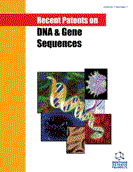Abstract
The maintenance of T cell homeostasis requires the balance of both positive and negative regulatory signals of T cell proliferation. The herpesvirus entry mediator (HVEM) is a TNF superfamily receptor member, which provides a stimulatory signal following engagement with LIGHT (TNFSF14) on T cells. In contrast, HVEM can also provide an inhibitory signal to T cells when it binds the B and T lymphocyte attenuator (BTLA), a ligand member of the Immunoglobulin (Ig) superfamily. Thus, HVEM may be viewed as a molecular switch, capable of facilitating both stimulatory and inhibitory cosignaling in T cells. Substantial evidence from both human disease and from experimental mouse models has indicated that dysregulation of the LIGHT-HVEM-BTLA cosignaling pathway can cause inflammation in the lung and in mucosal tissues. Moreover, the discovery that two different viruses, human cytomegalovirus (HCMV) and herpes simplex virus (HSV) both target the LIGHT-HVEM-BTLA system as part of their immune evasion strategies suggests that this cosignaling pathway may prove useful in manipulating host immunity. Indeed, the LIGHT-HVEMBTLA system may constitute an important molecular target for biopharmaceutical intervention as it holds the key for controlling both costimulatory and coinhibitory signals. Thus, the rational manipulation of this pathway should aid in the development of safer and more effective drugs for a wide range of autoimmune-related inflammatory disorders. To this end, this review provides a summary on several recent patents associated with the LIGHT-HVEM-BTLA cosignaling system.
Keywords: LIGHT, TNFSF14, HVEM, BTLA, CD160, TNF superfamily, costimulation, coinhibition, cosignaling, T cell proliferation
 11
11











